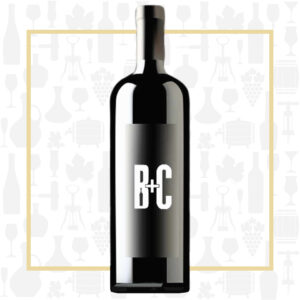Cellar Profile
In the mid 1700s, Bernardin Charrère moved from the Haute Savoie in Southeast France to the Aosta Valley and established Les Crêtes, a mill and farm in Aymavilles. This was in the middle of the 21 square mile Aosta Valley, in the heart of the wine region. In 1810, the family planted 2 hectares of vinifera grapes and the winery was born. The family still continues to craft wines from those vineyards to this day. Consistently recognized as the finest producer in the region, this is a boutique estate by international standards, but the largest privately-owned winery in Val d’Aosta. Working with the Italian government and other tiny vignerons in the region, Les Crêtes has been a pioneer in searching out rare, indigenous vinifera varieties — grapes like Petit Rouge, Mayolet, Prie Blanc, Premetta and Fumin, which exist nowhere else in the world — and helping protect them from extinction. This is one of the most challenging regions on earth to work for wine, with noncontiguous vineyards frequently planted on ledges on the side of steep Alpine mountains where they can find a little sandy soil. Hot summer days and extremely cool nights, coupled with a dry growing season allow for some of the longest hang times on earth. Their wines are powerful yet elegant, with trademark salty minerality – a true representation of this unique Alpine terroir.
Region
Surrounded by the Alps, the Valle d’Aosta is home to the highest elevated vineyards in all of Europe. The region is divided into three main vineyard areas: the upper valley,Valdigne; the central valley; and the lower valley. Most vineyards in the Aosta Valley occupy the steep, south-facing slopes above the Dora Baltea river, a tributary of the Po. The dramatic topography and diminutive size of the valley mean that the area available for viticulture is limited. Much of the valley floor, with its mineral-rich, well-watered soils, is simply too fertile for quality viticulture. As a result, many of the best vineyards here are on the lower slopes, and climb steadily up the slopes to top altitudes of around 1300m above sea level.
Vineyard
Petite Arvine is sourced from the Monjovet vineyard in the East of the valley. Grown on morainic, loose, sandy soils on a south-facing slope. The Monjovet region has traditionally been renowned for its red wine production.
Varieties
Petite Arvine, a white grape variety grown mainly in Valais, Switzerland and in Italy’s Valle d’Aosta, is so named for its small berries. It is unclear exactly where the variety originated; growers and officials from both regions claim it as their own. Petite Arvine wines are defined by their bracing acidity and grapefruit aromas. They often show a touch of salty minerality on the palate. Petite Arvine is early budding and late ripening and is somewhat fussy in the vineyard. It needs sunny sites that are protected from the wind so its grapes can reach full ripeness, which can be up to a month after Chasselas.
Winemaking
Gentle pressing, 12 day fermentation in stainless steel tanks under controlled temperature (18°C). 9 months “sur lies” maturation with continuous batônnage.
Tasting Notes
Bright yellow in the glass. The nose of the ‘Petite Arvine Flour’ is intensely aromatic with notes of orange blossom and white grapefruit. The palate is brimming with salty acidity that balances this fleshy wine, full of citrus and tropical fruit.

 info@buyersandcellars.ca
www.buyersandcellars.ca
info@buyersandcellars.ca
www.buyersandcellars.ca